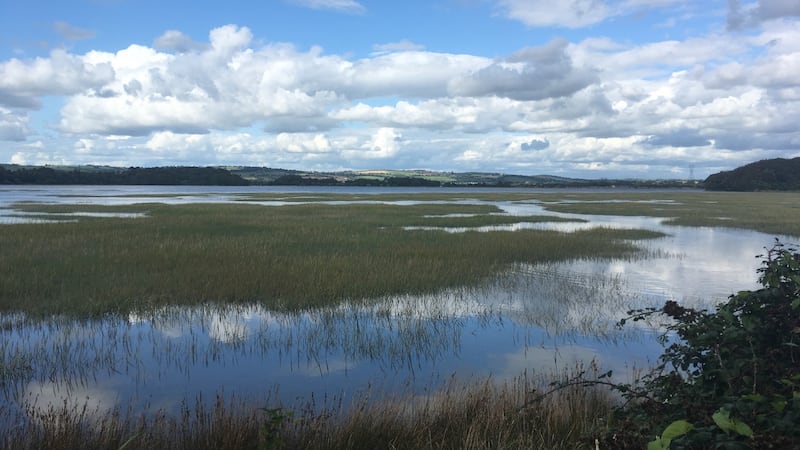Is there a better marriage in nature than the meeting of forest and shoreline? Something stirs at the millennia-old sight. For fans of coastal woodland it’s bonanza time, starting with the view of Fota Island from the train and the abundant specimens of Fota House arboretum.
At the other side of Fota you emerge at the start of the only bridge linking the mainland with the most-populated of Ireland's offshore islands: Great Island. Or, to use the common synecdoche, Cobh.
Across the bridge, a magnificent Norman edifice stands sentry on the island’s northern approaches. This is Belvelly Castle, a 12th-century keep recently restored by its owners.


Take the L2989 past it, cresting a small hill before hanging left on to Pottery Road, passing a private fishing lake. Here is the scenic northern route of hidden Cobh, among the quietest coastal walks in the whole harbour. Surrounded by low-altitude land, it's a marshy delta, testament to a time when Cork city itself was crisscrossed by a thousand reedy channels.
This is Ireland’s Deep South, if not quite Cajun Country.
The road leads to the magnificently named Knocknastooka (Cnoc na Stuaice, literally the tautological “Hill of the Summit”) where, as the name suggest, the road heads inland and upward, offering great views of Ballyvodock, and the Ballynacurra river.
On the other side of the hill we take a right past a ruin, and then a quick left down a tree-lined avenue, taking the next left – easily missed – for the old East Ferry marina. It’s a great spot oozing with atmosphere.
Across the channel is an old Anglican church, tucked away amid the private woodland of Rathcoursey House, while to your right is Marloag (or Marlogue) Wood. There are oak trees here (planted in the 1920s), Douglas firs, Monterrey pines, ash and sycamore , plus plantation sitkas on higher ground.
The narrow footpath leading from the marina into the forest isn’t marked on any map (there are few signposts anywhere), but it’s the best one, bringing you parallel to the water down to the shoreline near Marloag Point. From here, take another southwesterly path uphill, pausing to enjoy the views of the harbour before joining the main forestry roads and paths leading to the carpark.
At the carpark is a track heading west, and from there we walk into Corbally. From here to Cobh the road has some intermittent cars, and in hindsight walking the shoreline from Marloag to Glenmore Beach, or even to Cuskinny, may have been better.
As it is, the High Chapperal pub in Ballymore provides a swift refreshment en route to Battery Strand and the Cuskinny Marsh Nature Reserve – source of RTÉ’s annual dawn chorus recordings – before the hike into Carriganfoy Avenue on the outskirts of Cobh.
There’s a bus back to Cork, but instead we take a left down Mount Eaton to East Hill. Here is the view of views: Spike, Haulbowline, Whitegate and the broad expanse of Cork Harbour to your left while on the right soaring overhead, the stately homes and seaside terraces welcome you to the historic cathedral town of Cobh.
Great Island, Cork
Start: Fota train station
Finish: Cobh train station (shorter option Carriganfoy Avenue bus stop).
Suitability: Moderate fitness; care needed in Marloag Wood path and on some roads.
Effort: Around 22km distance, with a mild 260m climb.










